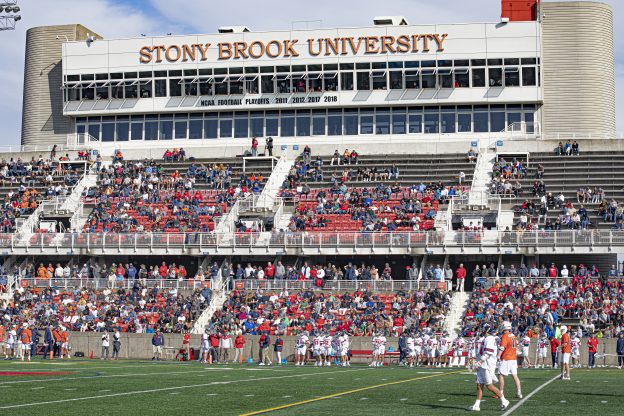
When it comes to attendance at Stony Brook sporting events, there is no question that the numbers are not where they once were. Last year’s football season yielded its lowest average attendance since 2013. In 2020, the men’s basketball team accrued 2,509 spectators per game. After the pandemic-ridden season in 2020-21, their average attendance dropped by roughly 600 seats.
The statistics have raised many questions. Are these drops in attendance just a blip in the radar? Do most students share a disinterest in sports, or are many simply unaware of the ease of access they have when it comes to sporting events? Despite an apparent lack of emotion displayed by students toward their athletic program, will we see attendance rise again as we shift away from life in a pandemic?
The Statesman recently published a series of articles exploring the potential reasons behind these drops in attendance. Online surveys and on-campus interviews revealed an apathy towards sports that existed even before the pandemic. Recent budget constraints have also posed a threat to student and fan engagement with sports in recent years, especially those resulting from the University’s COVID-19 response.
Most of the issues The Statesman identified existed before the pandemic. Despite these findings, the Stony Brook athletics department requested an interview with The Statesman following the publication of the articles to elaborate on how the pandemic exacerbated some of the problems the department faces. Below, four members of the department voice their opinions on the current state of student engagement in sports and the future of ticket sales.
Disinterest, or lack of experience?
Student apathy toward Seawolves’ athletics has been described as a “disinterest.” Online polls have indicated that the majority of Stony Brook students simply do not care about whether their football team has won the Golden Apple or if their basketball team is on the verge of clinching a spot in the NCAA tournament. Roughly 60% of students identified themselves as being “not invested” in their school sports teams.
But is “disinterest” the right word to describe these poll results? According to Maria Bonacore, the athletic department’s director of marketing and fan experience, this is not the case.
“It’s not so much a disinterest,” Bonacore said. “It’s like they never really had the opportunity to have an interest.”
Bonacore, who entered her position in August of 2020, references the fact that many Stony Brook students never had the chance to live a typical college life during their first few years at the University.
“A lot of [students] started their time here as a Seawolf at home behind a computer screen taking online classes during COVID-19,” Bonacore said. “They never had the opportunity to be eating at a dining hall, talking with other people, asking ‘Did you know homecoming is on Saturday?’, or saying, ‘Let’s go to a football game’ … there was no such thing as that.”
The reality is that current seniors are the only students to have witnessed Stony Brook sports prior to the quarantine in 2020. Most sophomores entered their first year of college during the fall of that year, when all classes were held virtually. Current freshmen were fortunate enough to enter Stony Brook when in-person classes resumed in the fall of 2021. Yet, they were still subjected to a slew of COVID-19 restrictions which likely made engaging in sporting events a challenge.
“The majority of universities and professional sports organizations didn’t allow full capacity attendance at any sporting event, or any event for that matter,” Robert DeVita, associate athletic director for strategic communications, said. “If they did, it was either 50 percent capacity, 75 percent capacity. These situations create a bunch of barriers [for students].”
Taking into account the four semesters of heavy COVID-19 restrictions, along with the current uncertainties of the pandemic, the athletic department views the situation as much more complicated than a simple disinterest in sports on the students’ part.
“We’re educating our students, we’re educating our fan base, and we’re reminding people what life was like at Stony Brook before COVID-19,” DeVita said. “We’re trying to make it even better than what they remembered back then.”
Budget Constraints
The onset of COVID-19 not only impacted the way students engaged with Stony Brook sports, but also the athletic department’s ability to communicate with students and fans.
In the fall of 2021, director of athletics Shawn Heilbron was asked about the effects of a limited budget on the athletic department in an interview with The Statesman. He disclosed that the department lost roughly 20 staff members during the onset of the pandemic, many of whom were involved with boosting student and fan engagement.
In a follow-up interview, deputy director of athletics Robert Emmerich further expanded on the effects of budget constraints by clarifying the situation with the lost employees.
“I want to be very clear on this: to be fair to the campus, nobody was let go,” Emmerich said. “What happened was — and this happened across the campus — there was a hiring freeze. So, if somebody left, we weren’t going to hire them back. If somebody left to get another job, [we] weren’t going to replace that position because we were trying to save money with the unknown costs that were coming and what was going to happen with the pandemic.”
During a time when ticket sales were on hold, many employees within the athletics department had no choice but to leave their positions and search the job market. However, when sports resumed and limited-capacity games began to take place, these same employees were unable to return due to the hiring freeze implemented by the university’s Faculty and Student Association (FSA).
As a result, the athletic department lost two ticket sellers, the director of ticket sales, director of marketing and assistant director of marketing — all of whom were vital to the department’s ability to not only sell tickets, but to also promote Stony Brook sports to fans and students across campus.
“[This is] important to note because I don’t want there to be a perception that people were let go — that they were fired, terminated, or thrown out,” Emmerich said. “That wasn’t the case. In fact, we took great pride in this … Our staff stepped up to do every single role that was asked of them, whether it be temperature checks, academics, whatever it might be to help out.”
This mass exodus of employees during the hiring freeze led the athletic department to appoint existing staff members to new positions in order to try and fill the gaps of those missing workers. With many of its employees in new and challenging positions, the athletic department struggled to balance fan engagement with simply running sporting events in a smooth manner.
“The people that just got here really didn’t have any time to worry about getting people to the game,” Emmerich said. “We were still in this weird space where they had to worry about being able to print a ticket, get people into the game, run the game and make sure the fan experience was a good one.”
Pressure on employees after the loss of faculty due to budget constraints likely played a role in decreased attendance at sporting events post-pandemic. However, Emmerich emphasizes the point that most schools around the country have experienced, and continue to experience, the effects of COVID-19 on both their budget and their overall student engagement in sports.
Comparisons to older schools
Evidence obtained from the Common Data Set shows that Stony Brook houses significantly fewer students on campus, has much less greek life participation and brings in substantially lower total revenue when compared to the athletic programs of powerhouse schools like the University of Massachusetts (UMass) and the University of Connecticut (UConn).
But according to Emmerich, comparing Stony Brook’s attendance numbers to institutions like UConn and UMass is like comparing apples to oranges.
“From someone who’s been here at Stony Brook a long time, we’re relative neophytes at the Division I level,” Emmerich said. “We’re only 20 years old in Division I, and we’re only 60 years old as an institution.”
Stony Brook’s inexperience as both an institution and an athletic program leads to a number of disadvantages when compared to other east coast flagship schools. Both UMass and UConn have had plenty of time to develop their programs to the point of playing at the Football Bowl Subdivision (FBS) level, while Stony Brook only competes at the Football Championship Subdivision (FCS) level.
UConn and UMass host a number of formidable opponents on an annual basis due to their longstanding athletic prestige. As part of the Big East tournament, the Huskies consistently face high-profile teams including Villanova and Georgetown. UMass, on the other hand, belongs to the Atlantic Ten conference.
Emmerich believes that UConn and UMass outperform Stony Brook when it comes to ticket sales because they have a rich history in sports that has been built over many years.
“We aspire to be like them,” Emmerich said. “We would be shooting to be a UConn. But we’re behind them a little bit. Maybe down the road as we progress in maturity, we’ll be able to get to that level.”
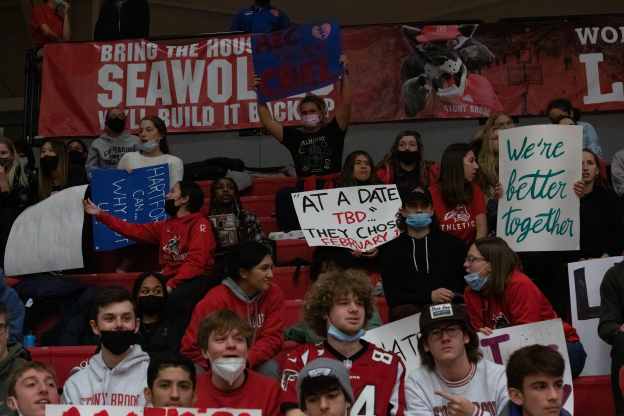
Initiatives to reconnect with students
Obstacles resulting from the pandemic will likely persist through the upcoming school year. However, the athletics department says that it is headed in the right direction.
Monica Schacker, assistant director of ticket operations, believes that much can be learned from the attendance numbers of games held during the final weeks of the season.
“The last three out of six basketball games this year saw our attendance in the 2,000s, which was great,” Schacker said. “[The] Albany [game] was over 3,000, which was our best of the year and some of our best over the last few years in attendance.”
Stony Brook men’s basketball’s Feb. 26 matchup against Albany was significant for a number of reasons. Not only was it Senior Night, but it was the last time the Seawolves would face the Great Danes as conference foes.
The game brought in 3,048 attendees, which was the highest home attendance amount for the men’s basketball team since Feb. 2020.
The women’s basketball team saw some of its highest attendance numbers on a night that was also characterized by school spirit. On Feb. 23, women’s basketball hosted UMass Lowell in its penultimate regular season matchup of 2022. Athletes and non-athletes alike packed the stands that night to wave signs in protest of the America East’s decision to ban all Stony Brook teams from competing in the playoffs.
The student-led movement resulted in an attendance output of 860 — the second-highest number of seats filled by women’s basketball all season long.
As for the football team, its average attendance was 6,676 seats per home game in 2021. This is still less than what it once was in 2019, when the team averaged 7,316 seats per home game. The team’s current attendance numbers remain lower than 2019 despite its slightly improved record of 5-6 in 2021.
While attendance seems to be returning to what it once was, the athletic department sees raising awareness and boosting school spirit as the two keys to maintaining these positive trends.
“We’re really optimistic about where we’re going next year,” Schacker said. “We have the time and the resources now to really make it an awesome experience for everyone, students included.”
Raising awareness
With things slowly returning to normalcy in a post-pandemic world, the athletics department is working to restore the level of student engagement that was present before the lockdown.
To connect with students, the athletic department is currently collaborating with Stony Brook’s undergraduate student government (USG).
USG, which is responsible for funding many of Stony Brook’s undergraduate clubs and programs, provides the athletic program with opportunities to connect with students who are on the fence when it comes to sports. One of the most effective ways of doing so, according to Bonacore, is to invite some of Stony Brook’s undergraduate organizations to sporting events to be spotlighted as a so-called “student group of the game.”
“It could be the rugby team, it could be a fraternity, it could be a sorority, any of these groups can be spotlighted as our student group of the game,” Bonacore said. “They get to hold up their flag, they get to be recognized for who they are. And it just so happens to be platformed at a football game.”
The idea is that these student groups are not only receiving recognition, but they are then encouraging other students outside of the organization to attend current and even future games.
Conversations between the Dean of Students office and the athletic department have led to initiatives aimed at increasing student awareness of sporting events. One of those initiatives is aimed at making it known that student admission to sporting events is free. According to Emmerich, many students are unaware that a simple swipe of their ID card will grant them access to all sporting events on campus.
Emmerich also said that the department is working on an app exclusively designed to keep students informed and updated on the athletic program — whether it be about free student admission, potential in-game experiences or simply the time and place to attend games.
“Student admission is free, and when they come, it’s fun,” Emmerich said. “Let’s get them here. Let’s create a great experience.”







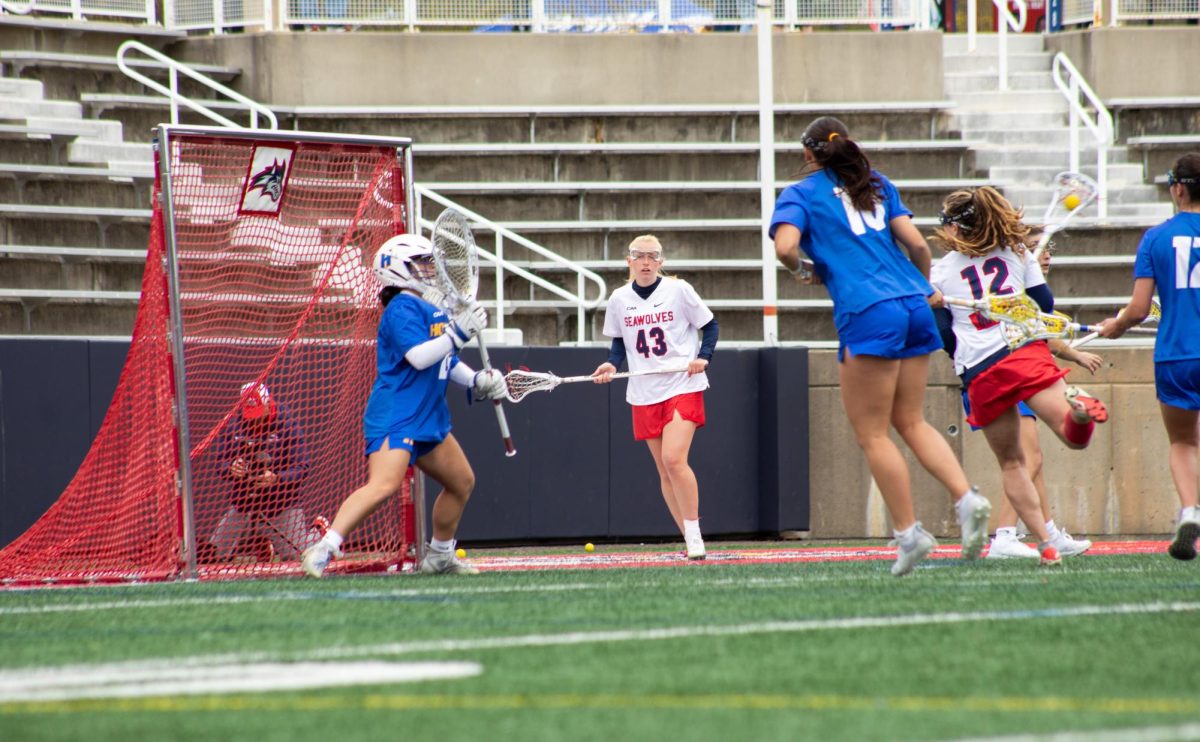
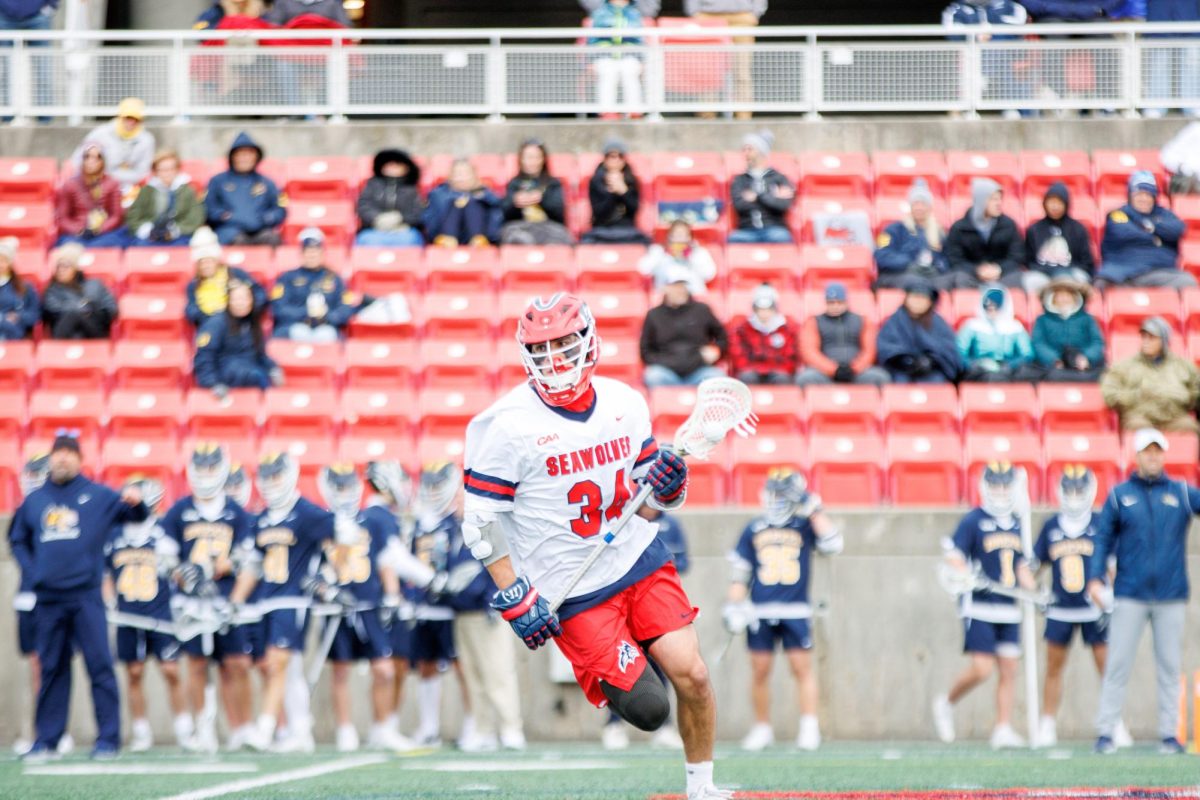
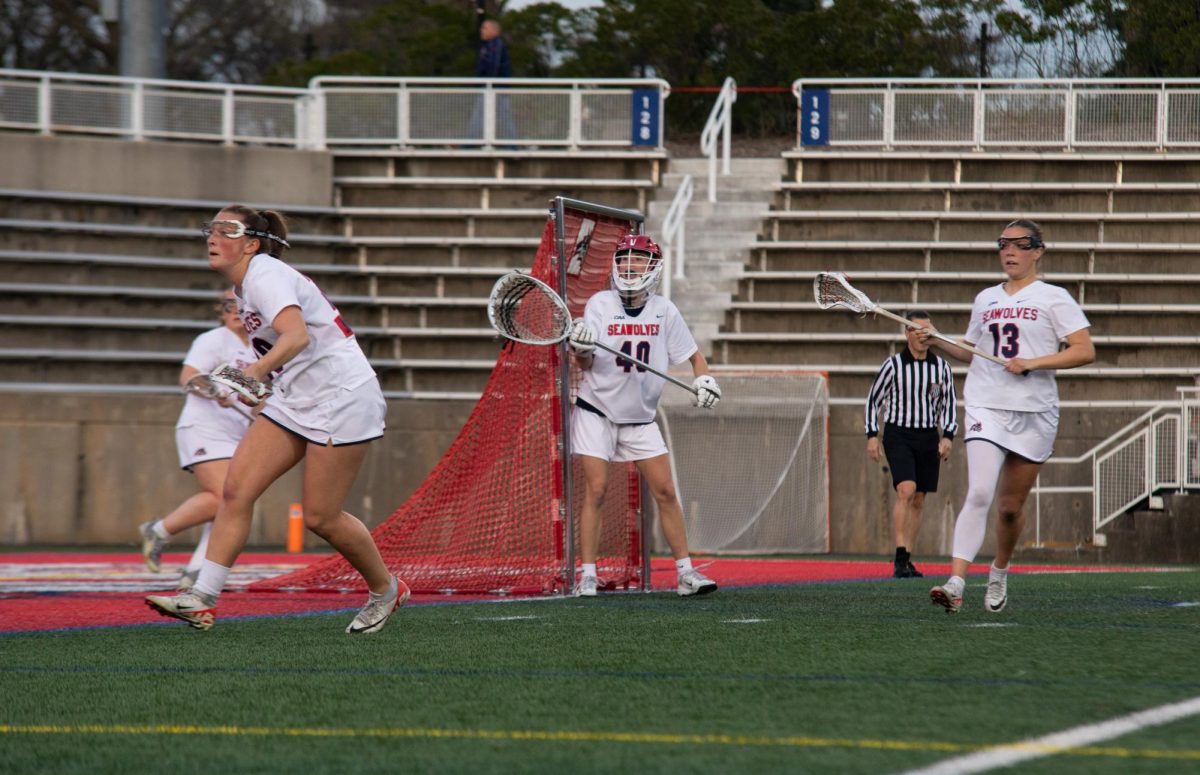
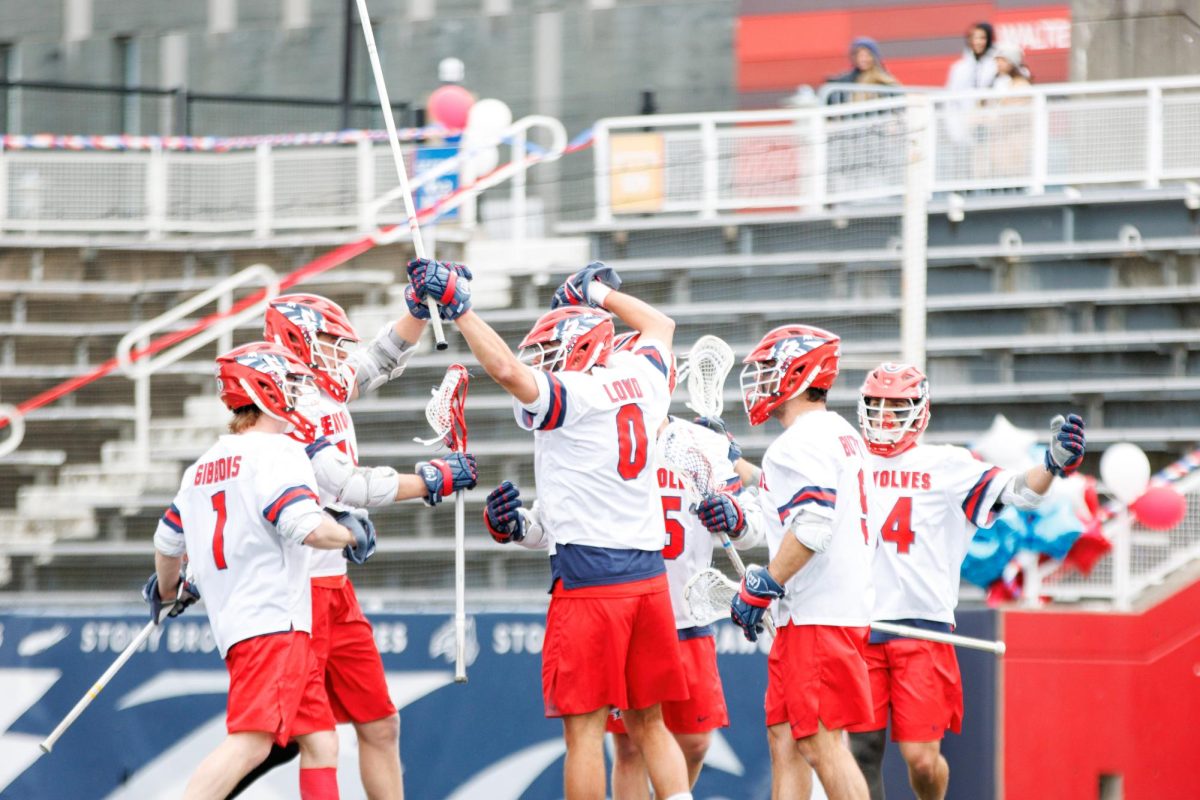

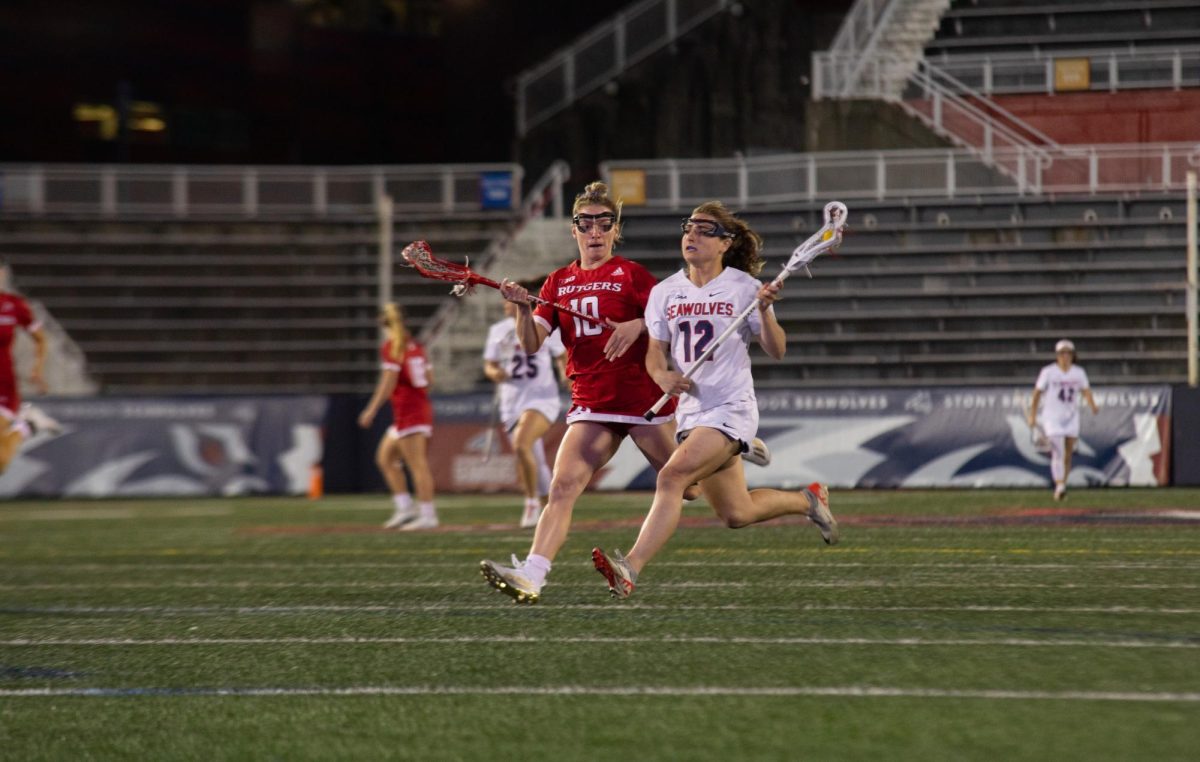





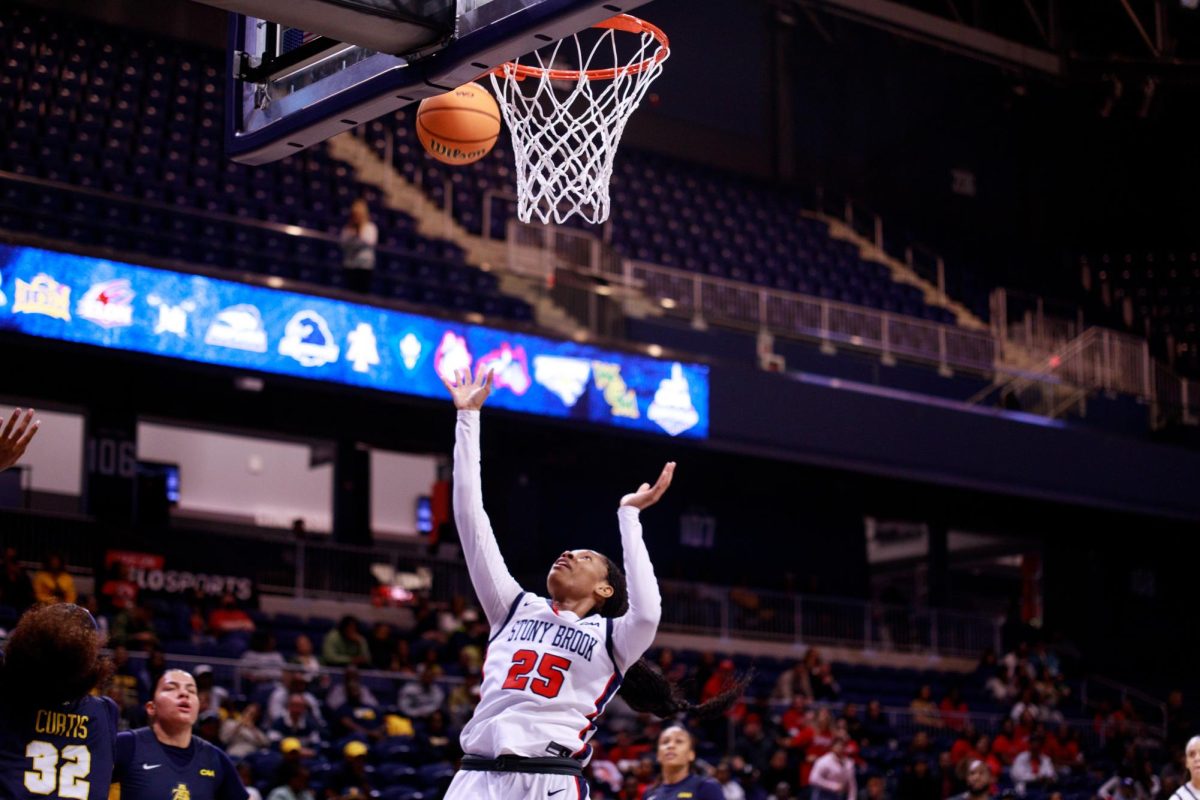

jim harrison • Jun 18, 2022 at 11:35 am
Apropos that the individual most-quoted in this article has been in athletics at SBU for decades. In the corporate world, management and shareholders look for results, and not excuses.
The quoted attendance numbers for this past season’s basketball and football games seem grossly inflated. Season ticket holders who attended games sent me photos of a more-or-less empty arena and football stadium before halftime, after halftime and midway through the second half. The upper deck, over the suites was basically empty all season. For one conference hoops game, by their count, there were maybe 500 in attendance.
I notice that there were no excuses provided for the drastically declining attendance PRIOR to March, 2020. I said two years ago that complacent administrators would now have another excuse to distract from their lack of success in the years prior to COVID. Low-and-behold, they contacted The Statesman and voice that excuse. When was the last time that athletics administration reached out to The Statesman. ( I can hear Statesman alum laughing right now.)
There is a perception among fans and season ticket holders that administration (for the past eight years or so) seems not to care about growing the program. There is also the perception that administration seems content to “collect a paycheck”. If that’s the case, the inability to correct the declining/stalled attendance and financial contributions lend credence to those theories.
Taking that into consideration, I’d ask…would you agree that the results from 2015/2016 on, reflect these perceptions?
Watching hoops and football games on television, it was clear that there were universities and smaller programs in the northeast who had tremendous post-covid attendance, Hofstra included. Their administrators have created a culture, and SUCCESSFULLY sold their vision to staff, fans, donors and season ticket holders.
Stony Brook Athletics has been blessed with tremendous talent on their staff the past few years. Many who have left, stated the culture was not the best, and more than one have used the term “toxic” to me and others. In my opinion, it’s a shame that comfortable administrators are allowed to create and define the culture in college settings. Hungry, results-oriented administrators would be able to do wonders in this market, with fundraising and with respect to growing attendance and successfully engaging the community.
Sadly, continued perceived complacency appears to be the future of the program. And that’s a damned shame. The kids, dedicated staff, fans and supporters certainly deserve better.